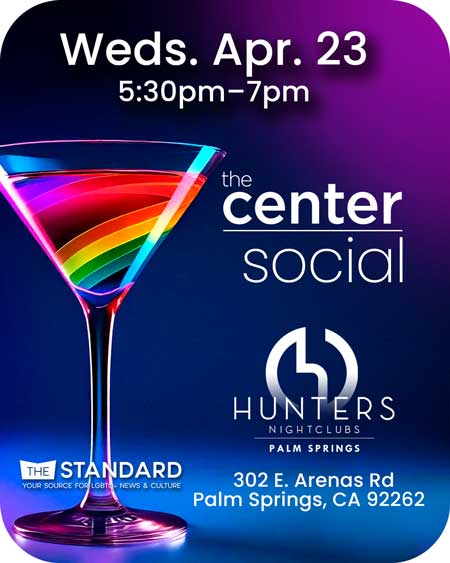By Adrian Luzan
Last year, 2020 was an unprecedented year as the coronavirus pandemic swept across the globe disrupting daily life. As most countries went into various forms of lockdown in an effort to curb the spread of the virus, large events and festivals including pride celebrations, marches and demonstrations were canceled. As a response to the mass cancellations, many organizations opted to host virtual events. In June 2020, InterPride also launched Global Pride, a virtual event connecting pride organizations and online attendees across the globe. As 2020 came to an end, many pride events have again been forced the cancel, postpone or go virtual. However, a handful of events in countries like Taiwan, Australia and New Zealand with closed borders and tight control of the pandemic have eased back into near-normal life and are able to again host in-person pride events. It’s expected that most pride events will return to their previous form in 2022 as vaccine distribution reaches high levels across the world.
History Of Pride Month
On a hot summer’s night in New York on June 28, 1969, police raided the Stonewall Inn, a gay club in Greenwich Village, which resulted in bar patrons, staff, and neighborhood residents rioting onto Christopher Street outside. Among the many leaders of the riots was black, trans, bisexual woman, Marsha P. Johnson — leading the movement to continue over six days with protests and clashes. The message was clear; protestors demanded the establishment of places where LGBT+ people could go and be open about their sexual orientation without fear of arrest.
Pride Month is largely credited as being started by bisexual activist, Brenda Howard. Known as, “The Mother of Pride,” a year after the Stonewall Riots, Brenda organized Gay Pride Week and the Christopher Street Liberation Day Parade. This eventually morphed into what we now know as the New York City Pride March, and from where parades and marches across the world evolved.
The LGBTQ+ rights movement has made tremendous strides over the past few decades and much of the progress in visibility is thanks in part to gay pride parades and marches that have taken place in cities around the world.
The global landscape for LGBTQ+ rights, protections and acceptance varies tremendously by location, with some destinations attracting millions of visitors to their events like Madrid Gay Pride, Sao Paulo Gay Pride or San Francisco Gay Pride, while more than 70 other countries have laws that allow discrimination or persecution of LGBTQ+ people.
While the aim of pride day started with a political nature, many cities around the world have such wide acceptance and legal protections that many events have become a celebration of pride for the local LGBTQ+ community. Depending on the country or city where the event is being held, the marches and parades often campaign for recognition and acceptance of same-sex marriage, legal protections for couples and families, anti-discrimination laws or trans rights. Although there are still obstacles in achieving full acceptance and protections for the LGBTQ+ community, the progress made just over the past few decades has been significant. Over the past 50 years, pride events, marches and demonstrations have evolved considerably. In western nations where LGBTQ+ people are protected and acceptance is high, many pride events have grown in scale, welcoming millions of visitors to their celebrations. Major cities like New York, São Paulo and Madrid host some of the largest events in the world with crowds of up to 5 million people.
Global and Regional Pride Organizations
Several non-profit organizations have also formed within the past couple of decades in an effort to support prides regionally and around the world. InterPride is one such group and its members include dedicated volunteers who organize and work to put on pride events all over the world. They are also the creator and licensor of WorldPride, an event that promotes LGBTQ+ pride issues on an international level through parades, festivals and other cultural activities. The inaugural WorldPride was held in Rome in 2000. The members of InterPride at its annual general meeting select the host cities. Previous WorldPride host cities also include Jerusalem, London, Toronto, Madrid and New York City. Copenhagen is now set to host the next edition of WorldPride August 12-22, 2021.
Similar organizations also exist at a regional level such as EuroPride and Pride of the Americas. EuroPride operates similarly to InterPride and they also license an event by the same name (EuroPride) in a different European city each year. Pride of the Americas was created with a similar mission to connect pride events in both North and South America. The inaugural Pride of the Americas is set to take place in Fort Lauderdale November 2021.
The Origin Of The Rainbow Flag, Fascinating And Very Recent One
Harvey Milk, who asked a talented designer friend, Gilbert Baker, to design an all-encompassing symbol to take on San Francisco’s Pride March in 1978. Sadly, Harvey Milk was assassinated along with Mayor, George Moscone, on November 23, 1978 in San Francisco City Hall by disgruntled former Supervisor Dan White, who was angry at Milk who had lobbied hard against having him reappointed on the Board of Supervisors.
Artist and activist Gilbert Baker is credited with creating the first pride flag, meant to represent the gay community. “Flags are about proclaiming power” Baker said.
The United States flag inspired Baker, with its series of stacked lines, and also by Pop Art of the time. Several communities at the time had reclaimed the Pink Triangle as a symbol of queer power. The Pink Triangle was used in Nazis concentration camps to identify men imprisoned for their homosexuality. Despite the Pink Triangle’s prevalence, Baker argued that there was a need for a new symbol “We needed something beautiful. Something from us.”
The flag was first flown in San Francisco’s United Nation’s Plaza in June of 1978. Some historians have argued that the idea of the rainbow flag came about because of the rainbow’s link to actress Judy Garland. A strong supporter of the gay community, in reference to her role in The Wizard of Oz. Baker stated, however, that the idea of a rainbow pride flag did not stem from Garland’s singing of “Somewhere Over the Rainbow”. According to Baker, “It’s a natural flag. It comes from the sky”.
The original LGBT pride flag contained the colors hot pink, meant to represent sexuality, and turquoise, meant to represent magic or art, depending on the source.
Hot pink was removed from the original pride flag because fabric and dye in that color was difficult to find. Turquoise was removed to make the flag appear more symmetrical when hanging vertically.
The meaning of each color
Red: Vitality
Orange: Healing
Yellow: Sunlight
Green: Nature
Indigo: Harmony
Violet: Spirit
In 1988, a man named John Stout and the LGBT Pride Flag found national attention when he sued his West Hollywood landlords for the right to display the flag on his balcony. He won.
After a scary, depressing and isolated year we are all ready to celebrate Pride the way we are used to. But one thing we should keep in mind is to continue to create awareness for equality. Remember that in certain parts of the world and even our own country it is illegal to hold your partners hand in public if that person is of the same sex as you. Let’s change that.


